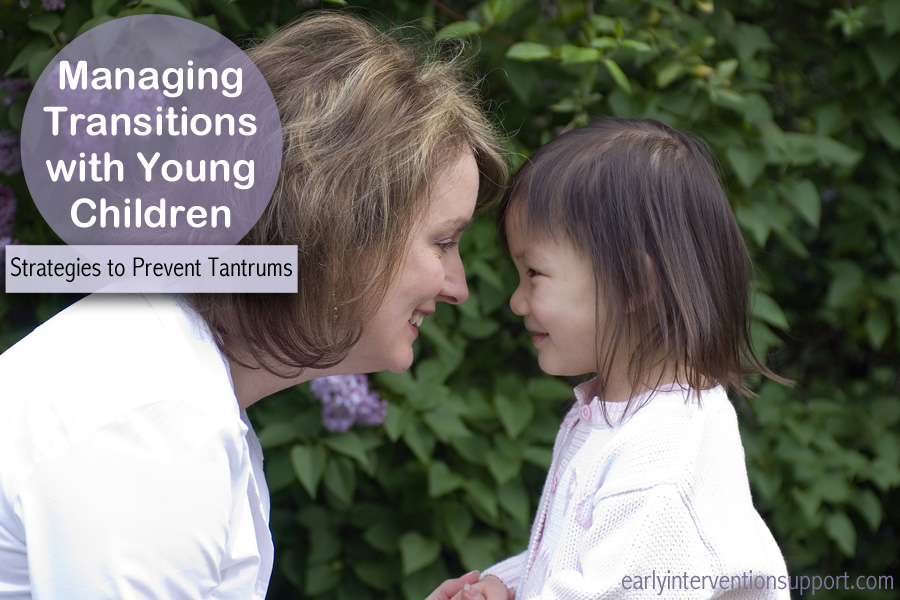Many parents or caregivers discover at one time or another that transitions in daily routines can be very challenging with a toddler, particularly if that means ending a favorite activity or beginning a non-preferred one. While most toddlers have tantrums from time to time, there are some strategies that you can use to help make transitions easier for your child…and for you!
Giving Verbal Reminders
Transitions can be especially difficult if they are abrupt for the child, so giving verbal reminders that a transition is about to take place can prepare the child for the upcoming change. Try giving several warnings (perhaps 5 minutes before the activity will end, then again 2 minutes before the end, and 1 minute before the end). You can say “Emma, in 5 minutes we will go inside and eat a snack.” Some parents question this strategy because they wonder if their toddler can grasp the concept of 5 minutes, but the goal is to prepare the child that the transition is coming, so don’t worry about that. It can also be helpful to set a timer. Your child will learn that when the timer beeps, it is time to say goodbye to whatever she was doing.
Counting Down
Another strategy I often combine with giving verbal reminders is what I call Counting Down to Goodbye. After you’ve given your last verbal warning and it is time to end the activity, you can say “Ethan, we’re going to count to 3 and then say goodbye to the Play Doh. 1…2…3…goodbye Play Doh.” Encourage your child to say goodbye to the object/place. It may sound silly, but for some toddlers it really works!!
Tell Your Child What is Coming Next
It can help your child to know what they are going to do after the transition, especially if it is something your child enjoys. This can be done in a few ways. One way is to use a first-then statement. If your child dislikes cleaning up, but loves the next routine, try saying “First we’ll clean up, then you’ll take a bath.” If you’re transitioning to a non-preferred activity, you can use a first-then statement to help them to know what they will do when they complete the disliked activity, such as “First we’ll brush your teeth, then we’ll read a story.” You can also combine this strategy with giving a verbal reminder like in the previous example-“Emma, in 5 minutes we will go inside and eat a snack.”
Establish a Routine For Everyday Transitions
This is especially effective when leaving a favorite place, like the playground or daycare. Set up an enjoyable routine for you and your child to go through each time you leave this place (while simultaneously getting closer to the exit). When leaving the playground, for example, stop for a drink at the water fountain, then pet the pretend pony, then pick a flower to take home to Mommy. After a few trips, your child will know this routine, and you will be in your car and on your way home before you know it.
Sing a Song
Singing a song about a transition can help make it more enjoyable for the child and familiarize them with this routine. Examples include songs about cleaning up, diaper changes, hand washing, teeth brushing, going to bed, etc. If you don’t know a song, make one up! Singing it each time you do the transition can be very helpful.
Make a Game Out of It
Finding a way to make a game out of a transition can make it fun and provide a distraction. If your child has difficulty getting out the door in the morning to go to daycare, tell Daddy to “race” the two of you to the car to see who is fastest. If putting on your child’s shoes is challenging, see how fast you can put them on while you and your child count. The sky’s the limit with this strategy!
You may need to try a few different strategies before you discover which ones work best to make transitions easier for your toddler. If you continue to struggle with transitions, feel free to ask your early intervention therapist for additional suggestions.
By: Amy Yelich, M.Ed

